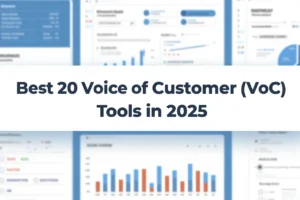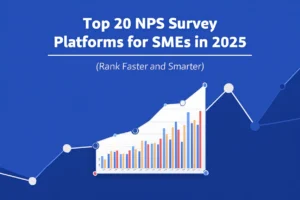What is Brand Activation?
Brand activation is the process of bringing a brand to life through various types of experiences and interactions. It aims to create an emotional connection between the brand and its audience, encouraging customer engagement and building long-term loyalty. Pearl Lemon Experiences focuses on crafting unique brand activation campaigns that resonate with target audiences, ensuring memorable and impactful interactions.
Why Is Brand Activation Important?
Brand activation is essential for several reasons:
- Increased Brand Awareness: By creating engaging experiences, brand activation helps raise awareness about your brand. When customers interact with your brand in memorable ways, they are more likely to remember and talk about it.
- Customer Engagement: Active engagement through brand activation builds a stronger relationship with customers. It turns passive customers into active participants, making them feel more connected to your brand.
- Building Emotional Connections: Brand activation creates opportunities for emotional connections. By providing meaningful and personal experiences, customers are more likely to develop a positive emotional association with your brand.
- Driving Customer Loyalty: When customers have positive experiences with a brand, they are more likely to become loyal. Loyalty leads to repeat business and can also turn customers into brand advocates who promote your brand to others.
- Differentiation in the Market: In a crowded market, brand activation helps your brand stand out. Unique and engaging experiences make your brand more distinctive and memorable compared to competitors.
- Direct Customer Feedback: Brand activation events and campaigns often provide direct interaction with customers, allowing you to gather valuable feedback and insights. This feedback can be used to improve products, services, and future marketing strategies.
- Driving Sales: Engaged and emotionally connected customers are more likely to make purchases. Brand activation can directly lead to increased sales by motivating customers to buy.
Different Types Of Brand Activation
Brand activation can take many forms, each designed to engage customers in unique and meaningful ways. Here are some of the main types:
- Experiential Marketing: This involves creating live, immersive events where customers can interact directly with the brand. Examples include pop-up shops, product demonstrations, and branded events. These experiences help create memorable moments that deepen the emotional connection between the brand and the audience.
- Digital Campaigns: These campaigns use online platforms and social media to engage customers. Examples include interactive websites, social media contests, and virtual events. Digital campaigns can reach a broad audience and are often designed to encourage sharing and online engagement.
- Sampling Campaigns: These campaigns provide customers with free samples of a product. This allows potential customers to try the product without any risk, which can lead to increased interest and sales. Sampling campaigns can be conducted in-store, at events, or even through direct mail.
- In-Store Promotions: These are events or activities held within a retail location to engage customers at the point of sale. Examples include in-store demonstrations, exclusive discounts, and special events. In-store promotions can drive immediate sales and enhance the shopping experience.
- Sponsorships and Partnerships: Associating your brand with events, causes, or other brands can increase visibility and credibility. Examples include sponsoring a sports team, partnering with a charity, or collaborating with another brand on a joint promotion. These partnerships can help reach new audiences and create positive associations.
Each type of brand activation serves a specific purpose and can be tailored to fit the brand’s goals and target audience. At Pearl Lemon Experiences, our team works with you to identify the best type of activation services for your brand, ensuring a strategy that resonates with your audience and achieves your marketing objectives.
What are Brand Activation Strategies?
Effective brand activation strategies include:
- Understanding the Target Audience: Knowing the preferences, behaviors, and needs of your audience is crucial for creating relevant experiences.
- Creating Memorable Experiences: Developing unique and engaging activities that resonate with customers and encourage participation.
- Utilizing Multiple Channels: Combining online and offline efforts to reach a wider audience and create a cohesive experience.
- Incorporating Storytelling: Crafting compelling narratives that align with the brand’s values and mission to create emotional connections.
- Measuring and Analyzing Results: Continuously tracking the performance of activation campaigns to understand their effectiveness and make improvements.
Different Brand Activation Ideas
Brand activation involves creative and engaging ideas that capture the attention of your target audience. Here are some innovative ideas to consider:
- Pop-Up Shops: These temporary retail spaces create a sense of urgency and exclusivity. They allow brands to showcase their products in a unique setting and provide customers with an opportunity to experience the brand firsthand. Pop-up shops can be themed around a particular event or season to enhance their appeal.
- Interactive Installations: These are engaging displays or setups that encourage customer interaction. Examples include photo booths, augmented reality experiences, or interactive art installations. Interactive installations can attract attention and encourage social media sharing, amplifying the reach of your brand activation.
- Virtual Reality Experiences: Immersive digital experiences that transport customers to different environments or scenarios. VR can be used to give customers a tour of a new product, showcase a brand story, or create an entertaining experience that aligns with the brand’s message.
- Live Events: Hosting concerts, workshops, or other live events that attract and engage audiences. Live events provide an opportunity for direct interaction with the brand and can leave a lasting impression. They can also generate media coverage and social media buzz.
- Social Media Challenges: Encouraging user-generated content through fun and creative challenges on social platforms. Examples include photo or video contests, hashtag campaigns, or themed challenges. Social media challenges can drive engagement and increase the visibility of your brand.
- Sampling Stations: Setting up stations where customers can try your product for free. This is particularly effective for food and beverage brands, but can also work for beauty products, tech gadgets, and more. Sampling stations can be placed in high-traffic areas like malls, festivals, or trade shows.
- Influencer Collaborations: Partnering with influencers to create content and experiences that promote your brand. Influencers can help reach a wider audience and lend credibility to your brand activation. Collaborations can include sponsored posts, live streams, or co-hosted events.
- Community Engagement Events: Organizing events that give back to the community or support a cause. Examples include charity runs, clean-up drives, or educational workshops. These events can create a positive image for your brand and build strong community ties.
- Flash Mobs: Coordinating a surprise performance in a public place to attract attention and entertain the audience. Flash mobs can create buzz and excitement, encouraging onlookers to share their experience on social media.
- Product Launch Parties: Hosting exclusive events to celebrate the launch of a new product. These parties can include live demonstrations, entertainment, and opportunities for guests to try the product. A well-executed launch party can generate media coverage and word-of-mouth promotion.
Examples Of Successful Brand Activation
Successful brand activation campaigns can serve as inspiration and demonstrate the effectiveness of different strategies. Here are some notable examples:
- Coca-Cola’s Share a Coke Campaign: Coca-Cola replaced its iconic logo with common names on its bottles and cans. This personalized touch encouraged customers to find and share bottles with their own names or the names of friends and family. The campaign generated significant social media buzz as people shared photos of their personalized Coke bottles, increasing brand engagement and sales.
- Nike’s House of Go: To promote its new running shoe, Nike created an interactive pop-up experience in New York City. The “House of Go” allowed visitors to test the shoes in a fun and engaging environment filled with trampolines and other interactive elements. This hands-on experience not only showcased the product’s features but also created memorable moments that participants shared on social media.
- Red Bull’s Stratos Jump: Red Bull sponsored Felix Baumgartner’s record-breaking skydive from the stratosphere. The event was streamed live and attracted millions of viewers worldwide. This extreme and daring activation aligned perfectly with Red Bull’s brand image of pushing boundaries and living adventurously. The campaign generated massive global media coverage and significantly boosted brand awareness.
- IKEA’s Real-Life Series: IKEA recreated iconic living rooms from popular TV shows, such as “Friends,” “The Simpsons,” and “Stranger Things,” using its furniture and decor. These setups were displayed in select stores and featured in an online campaign, allowing fans to see and purchase the items used to create the looks. This activation tapped into pop culture and provided a fun and relatable way for customers to engage with the brand.
How to Measure Brand Activation?
Measuring the success of brand activation involves several metrics:
- Engagement Rates: Tracking interactions, shares, and comments on social media and other digital platforms.
- Sales Data: Analyzing any increases in sales during and after the activation campaign.
- Customer Feedback: Collecting feedback through surveys or direct interactions to gauge customer satisfaction.
- Brand Awareness: Measuring any changes in brand recognition and recall through market research.
- Return on Investment (ROI): Comparing the costs of the activation campaign against the financial benefits it generated.
Conclusion
Brand activation is a powerful tool for creating memorable experiences and fostering deeper connections between brands and their audiences. By understanding its importance, exploring different types and strategies, and measuring its success, brands can effectively engage customers and drive long-term loyalty. At Pearl Lemon Experiences, our team is dedicated to delivering impactful brand activation campaigns that elevate your brand and resonate with your target audience.
FAQs
Customer feedback provides valuable insights into the effectiveness of the brand activation campaign. It helps understand customer satisfaction, preferences, and areas for improvement, enabling brands to refine future activation strategies.
Brand activation drives sales by creating memorable and engaging experiences that encourage customers to make purchases. It builds stronger relationships with customers, increasing their likelihood of choosing the brand over competitors.
When planning an activation campaign, a brand should consider its target audience, campaign objectives, budget, and the type of activation that best aligns with its goals. Additionally, it’s important to create a compelling narrative and ensure that the activation is measurable.
Common challenges in brand activation include aligning the campaign with brand values, ensuring seamless execution, engaging the target audience effectively, measuring the campaign’s success accurately, and managing budget constraints.
At Pearl Lemon Experiences, our team specializes in crafting unique and impactful brand activation campaigns. We offer a range of services, from ideation and planning to execution and measurement, ensuring that each activation resonates with your audience and achieves your marketing goals.





